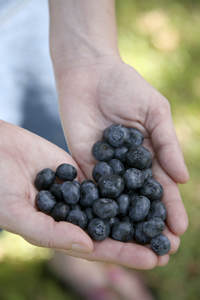

North Carolina State University and North Carolina Cooperative Extension are partnering with the Carolina Farm Stewardship Association to deliver workshops across the state that help N.C. farmers meet with U.S. Department of Agriculture (USDA) fresh produce safety standards. Workshops will be held at four Cooperative Extension centers across the state in November and December.
The trainings will address how local farmers can achieve USDA Good Agricultural Practices (GAPs) certification, provide information on risks behind specific GAPs requirements, and outline logistics for preparing and scheduling a GAPs audit. The USDA GAPs certification program is an independent audit of produce suppliers that focuses on best agricultural practices to verify that fruits and vegetables are produced, packed, handled and stored in the safest manner possible to minimize risks of microbial food safety hazards.
As pressure mounts for agricultural producers to pass food safety audits for their operations and crops, one of the most common concerns Cooperative Extension agents hear from farmers is that the GAPs certification process is confusing and overwhelming.
An N.C. farmer discussing preparation for a GAPs-certification audit explained, “I need someone to help me understand things better so this doesn’t seem so complicated. Otherwise I just put this information in the corner and give up.”
Workshops will focus on prevention and risk identification across all commodities from farm to fork. Wholesalers, community supported agriculture (CSA), educational institutions and retail establishments increasingly want to know what risk-reduction practices are in place on the farm.
Another N.C. farmer discussing GAPs certification said, “The driving reason for us getting GAPs certified is to be eligible to sell to wholesalers, and by extension, major retailers, the party that insists that any vendor be GAPs certified.”
An N.C. Specialty Crop Block Grant funded the development of this curriculum. For more information, contact Dr. Audrey Kreske, Food Safety Extension Associate, at ackreske@ncsu.edu.
EVENT DETAILS
Pender County
Monday, November 19, 2012 1:00 PM – 5:00 PM
Pender County Cooperative Extension Office
801 S. Walker St., Burgaw, NC 28425
Contact: Mark Seitz, 910-259-1235, maseitz@ncsu.edu
Participants Feedback: ‘Cleared up some questions I had’, ‘Very useful information’, ‘Simplified the process for me’, ‘Very illustrative’, ‘Good examples’
Richmond County
Friday, November 30, 2012 1:00 PM – 5:00 PM
Ag Services Center
123 Caroline St., Rockingham, NC 28379
Contact: Paige Burns, 910-206-0261, lpburns@ncsu.edu
Buncombe County
Tuesday, December 4, 2012 1:00 PM – 5:00 PM
Mountain Horticultural Crops Research & Extension Center
455 Research Drive, Mills River, NC 28759
Sue Colucci, 828-697-4891, sjcolucc@ncsu.edu
Chatham County
Wednesday, December 12, 2012 1:00 PM – 5:00 PM
Chatham County Agriculture Building Auditorium
45 South St., Pittsboro, NC 27312
Debbie Roos, 919-542-8202, Debbie.Roos@chathamnc.org


















